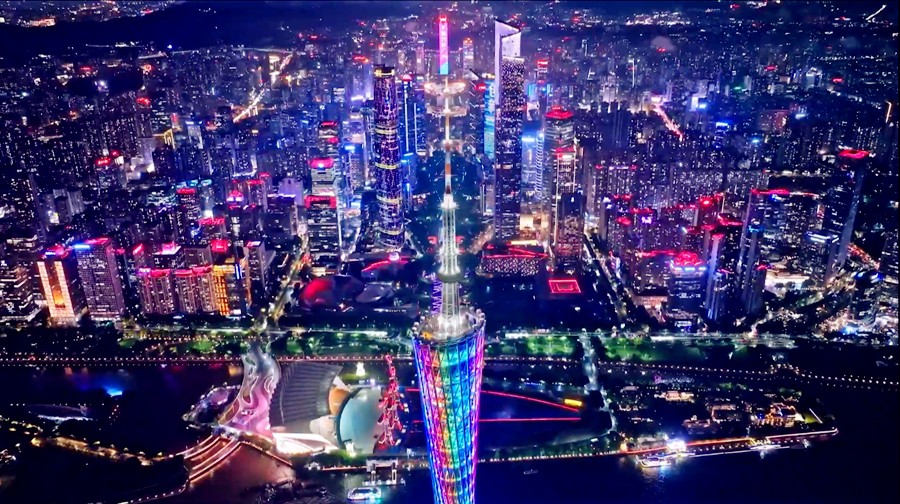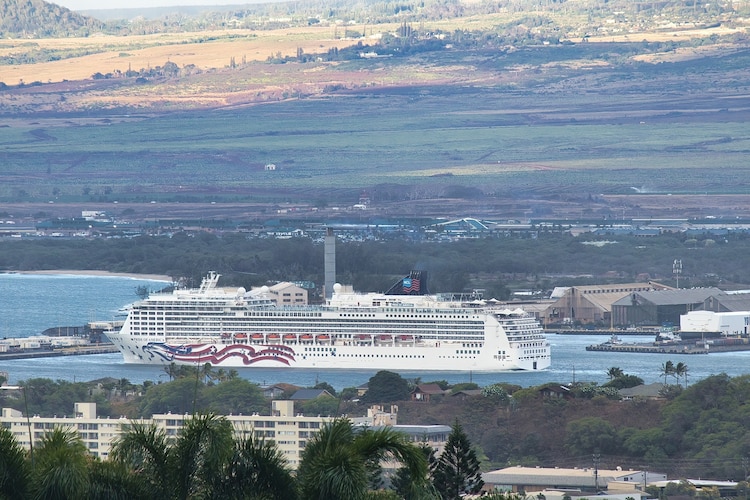Thailand is one of the most sought-after holiday destinations, attracting tourists from all over the world. The country offers a variety of attractions, from delicious cuisine and stunning natural landscapes to vibrant festivals, rich culture, and friendly locals. Thailand is widely recognized for its film industry, culinary scene, and globally renowned tourism sector, making it a must-visit destination.
Previously, the capital of Thailand was known as Bangkok, but it has officially been renamed Krung Thep Mahanakhon Amon Rattanakosin Mahinthara Ayuthaya Mahadilok Phop Noppharat Ratchathani Burirom, earning the title of the world’s longest city name.
Must-Visit Tourist Attractions in Thailand
Thailand offers several famous tourist regions, including Bangkok, Surat Thani, Chiang Mai, and Phuket, each offering a unique experience. For city tours, Bangkok is the perfect destination. Nature and wildlife lovers will enjoy Surat Thani, while those seeking cool mountain air can visit Chiang Mai. If you prefer beachside relaxation, Phuket is the ideal choice.
Curious about the best places to visit in Thailand? Check out the list below!
1. Wat Arun

Wat Arun, also known as the Temple of Dawn, is one of Thailand’s most revered and visually stunning landmarks. Located on the west bank of the Chao Phraya River in Bangkok, this magnificent temple has a rich history that dates back to the Ayutthaya period. Over the centuries, Wat Arun has remained a symbol of Thailand’s spiritual heritage, while recent innovations continue to enhance its significance in modern society.
The Historical Journey of Wat Arun
Wat Arun’s origins can be traced back to the 17th century during the reign of King Narai of the Ayutthaya Kingdom. Originally known as Wat Makok, the temple gained prominence when King Taksin established Thonburi as the capital in 1768. Legend has it that after a long battle, King Taksin arrived at the temple at dawn, inspiring its new name Wat Arun Ratchawararam Ratchawaramahawihan, or simply Wat Arun.
Under King Rama II and King Rama III of the Chakri Dynasty, the temple underwent significant renovations, including the construction of its iconic central prang (Khmer-style tower). The 79-meter-high prang, adorned with intricate porcelain and seashell mosaics, reflects sunlight beautifully at sunrise and sunset, earning the temple its name.
Wat Arun’s Role in Modern Society
Beyond being a historical and religious site, Wat Arun continues to play an integral role in the cultural and spiritual life of Thailand. It remains an active Buddhist temple where monks practice daily rituals, and it hosts major religious festivals such as Visakha Bucha Day and Loy Krathong.
In recent years, preservation efforts have modernized the temple’s infrastructure while maintaining its authenticity. Sustainable tourism initiatives, digital guided tours, and enhanced lighting systems have improved visitor experiences, ensuring that Wat Arun remains accessible and relevant in today’s digital age.
The Cultural and Economic Impact of Wat Arun
- Spiritual Significance: The temple serves as a place of worship, meditation, and religious ceremonies for Thai Buddhists and international visitors alike.
- Tourism & Economy: Wat Arun is a major attraction, contributing to Bangkok’s thriving tourism industry and supporting local businesses.
- Architectural Legacy: The temple’s design continues to inspire contemporary Thai art and architecture, preserving traditional craftsmanship.
Why Visit Wat Arun?
- Breathtaking Architecture: Admire the detailed craftsmanship of the towering prang, decorated with colorful porcelain.
- Panoramic Views: Climb the temple’s steep stairs for a spectacular view of the Chao Phraya River and Bangkok skyline.
- Rich Cultural Experience: Participate in Buddhist rituals and explore the temple grounds, steeped in centuries of history.
- Convenient Location: Easily accessible by boat, Wat Arun offers a unique riverside perspective of Bangkok’s vibrant cityscape.
Conclusion
Wat Arun stands as a timeless testament to Thailand’s spiritual and architectural grandeur. Its rich history, cultural importance, and ongoing innovations make it a must-visit destination for anyone exploring Bangkok. Whether you seek historical insights, breathtaking views, or a moment of peace, Wat Arun continues to illuminate the heart of Thailand’s heritage.
Address: 158 Thanon Wang Doem, Khwaeng Wat Arun, Khet Bangkok Yai, Krung Thep Maha Nakhon 10600, Thailand
Opening Hours: Monday-Sunday, 08:00 – 18:00 local time
2. Wat Pho
Known as the Temple of the Reclining Buddha, Wat Pho houses a massive golden Buddha statue lying down. This temple is one of Thailand’s most significant religious sites, recognized for its rich cultural and historical significance.
The History of Wat Pho: Thailand’s Temple of the Reclining Buddha
Wat Pho, officially known as Wat Phra Chetuphon Wimon Mangkhalaram, is one of Thailand’s most historic and revered temples. Located in the heart of Bangkok, this temple is renowned for housing the magnificent Reclining Buddha, as well as being the birthplace of traditional Thai massage. With its deep-rooted history, cultural relevance, and modern innovations, Wat Pho continues to be an essential part of Thailand’s spiritual and educational landscape.
A Glimpse into Wat Pho’s History
Wat Pho dates back to the 16th century during the Ayutthaya period, making it one of Bangkok’s oldest temples. However, it gained prominence in the late 18th century when King Rama I rebuilt and expanded it as part of his efforts to restore Thai Buddhism. Under King Rama III, the temple was further transformed into a center for education and healing, with inscriptions on medicine, literature, and astrology placed around the temple grounds.
The temple’s most famous landmark, the Reclining Buddha, was added in 1832. This 46-meter-long statue, covered in gold leaf, symbolizes the Buddha’s passage into Nirvana. The intricately designed feet of the statue, inlaid with mother-of-pearl, display 108 auspicious symbols of Buddhism, reflecting deep spiritual significance.
Wat Pho’s Role in Modern Society
While deeply rooted in tradition, Wat Pho remains relevant in today’s world as both a religious site and an educational hub. It is internationally recognized as the birthplace of Thai massage, and the Wat Pho Thai Traditional Medical and Massage School continues to train students from around the world in this ancient healing art.
In recent years, the temple has embraced modernization while preserving its historical integrity. Digital guides, interactive exhibits, and sustainable tourism initiatives have been introduced to enhance the visitor experience, making Wat Pho more accessible and engaging for global travelers.
Cultural and Economic Impact
- Spiritual & Cultural Significance: Wat Pho remains a place of worship and meditation for Buddhists, hosting significant religious ceremonies throughout the year.
- Tourism & Economy: As one of Bangkok’s most visited landmarks, Wat Pho contributes significantly to Thailand’s tourism industry and supports local businesses.
- Preservation of Traditional Thai Medicine: The temple continues to be a global center for Thai massage education, promoting health and wellness practices worldwide.
Why Visit Wat Pho?
- Iconic Reclining Buddha: Witness one of the most impressive Buddha statues in Thailand.
- Traditional Thai Massage: Experience authentic Thai massage at its place of origin.
- Rich History & Architecture: Explore centuries-old murals, stupas, and intricate temple structures.
- Peaceful Atmosphere: Enjoy a tranquil escape from Bangkok’s busy streets.
Conclusion
Wat Pho is more than just a temple—it is a living testament to Thailand’s spiritual and cultural evolution. With its historical significance, commitment to education, and adaptation to modern times, Wat Pho remains an essential destination for those seeking to explore Thailand’s rich heritage. Whether for spiritual reflection, cultural discovery, or traditional healing, Wat Pho continues to be a cornerstone of Thai history and society.
Address: 2 Sanam Chai Rd, Phra Borom Maha Ratchawang, Phra Nakhon, Bangkok 10200, Thailand
Opening Hours: Monday-Sunday, 08:00 – 18:00 local time
3. Pattaya Beach
Located in Pattaya, this beach is famous for its sunbathing and water sports activities. Visitors can also enjoy fresh seafood from the many restaurants and food stalls nearby.
Address: Chon Buri, Thailand
Opening Hours: Open 24 hours
4. SEA LIFE Bangkok Ocean World
This world-class aquarium allows visitors to explore marine life, including coral reefs, sharks, penguins, and sea turtles. Visitors can even interact and feed some of these sea creatures.
Address: B2 Floor, Siam Paragon Building, Pathum Wan, Bangkok
Opening Hours: Monday-Sunday, 10:00 – 21:00 local time
5. Chao Phraya River
The Chao Phraya River is the most famous river in Bangkok. Tourists can take boat rides to explore the river or enjoy a romantic Dinner Cruise by Chao Phraya Princess, offering stunning views of Wat Pho, Wat Phra Kaew, and Wat Arun.
Address: 780/488 Charoen Krung Road, Bang Kho Laem, Bangkok 10120, Thailand
Opening Hours: Open 24 hours
6. Sanctuary of Truth
This magnificent wooden temple features intricate carvings of Buddhist deities, handcrafted with impressive detail.
Address: 206/2 M NaKlua 5, Pattaya City, Bang Lamung District, Chon Buri 20150 Thailand
Opening Hours: Monday-Sunday, 08:00-18:00 local time
7. The Grand Palace
The Grand Palace is the former royal residence, featuring over 1,000 gold-covered buildings and the Temple of the Emerald Buddha (Wat Phra Kaew).
Address: Na Phra Lan Rd, Phra Borom Maha Ratchawang, Phra Nakhon, Bangkok, Thailand
Opening Hours: Monday-Sunday, 08:30-15:30 local time
8. Madame Tussauds Bangkok
This wax museum showcases lifelike statues of famous celebrities, world leaders, and historical figures.
Address: Pratunam, Ratchathewi, Bangkok, Thailand
Opening Hours: Monday-Sunday, 10:00-20:00 local time
9. Chatuchak Market
One of the world’s largest weekend markets, Chatuchak Market features over 15,000 stalls selling fashion, accessories, antiques, and local street food.
Address: Kamphaeng Phet 2 Rd, Khwaeng Chatuchak, Bangkok
Opening Hours: Saturday-Sunday, 09:00-18:00 local time
10. Kanchanaburi
Kanchanaburi is a nature lover’s paradise, home to waterfalls, forests, reservoirs, elephant trekking, and whitewater rafting.
Address: Kanchanaburi, Thailand
Opening Hours: Open 24 hours
Additional Must-Visit Destinations
- Maya Bay – A stunning bay surrounded by limestone cliffs, featured in the movie The Beach starring Leonardo DiCaprio.
- Krabi Island – Known for its breathtaking beaches, including Koh Poda and the Emerald Pool.
- Railay Beach – A paradise for rock climbing and enjoying beautiful sunsets.
- Phuket – A tropical getaway with vibrant nightlife and scenic beaches.
- Patong Beach – A lively beach with palm trees, golden sand, and water sports.
- Khao Yai National Park – Home to diverse wildlife and lush greenery.
- Elephant Jungle Sanctuary – A conservation site where visitors can feed and bathe elephants.
- Chiang Mai Night Bazaar – A bustling night market offering food, souvenirs, and handmade crafts.
Best Time to Visit Thailand
The ideal time to visit Thailand is during the dry season from November to February when the weather is pleasant. March to June marks the peak of the hot season, but it’s still suitable for exploring beaches and islands.
Travel Tips for Thailand
- Weather: Thailand has a tropical climate with hot, rainy, and cool seasons. Chiang Mai experiences cooler temperatures, whereas Bangkok and Phuket remain warm.
- Local Transport: Options include tuk-tuks, MRT, sky trains, buses, and taxis.
- Bargaining Culture: Haggling is common in local markets but should be done politely.
- Appropriate Attire: When visiting temples, dress modestly to show respect for Thai cultural traditions.
- Currency & Payment: The official currency is Thai Baht (THB), and digital payments via QR codes are widely accepted.
Are you planning a trip to Thailand? Start your adventure by booking flights, hotels, and tour packages today!










